While Chinook hops doesn’t have as flashy or dramatic of an origin story as some other hop varieties, it’s no less important to American craft beer. It was developed at a time when craft breweries were popping up throughout the country and Chinook made an impression almost immediately. It’s had its fair share of struggles, but Chinook has been able to overcome diseases, drops in popularity, and many other obstacles. Today, Chinook has taken its rightful place at the top of the hop world and is currently the third most popular hop variety in America.
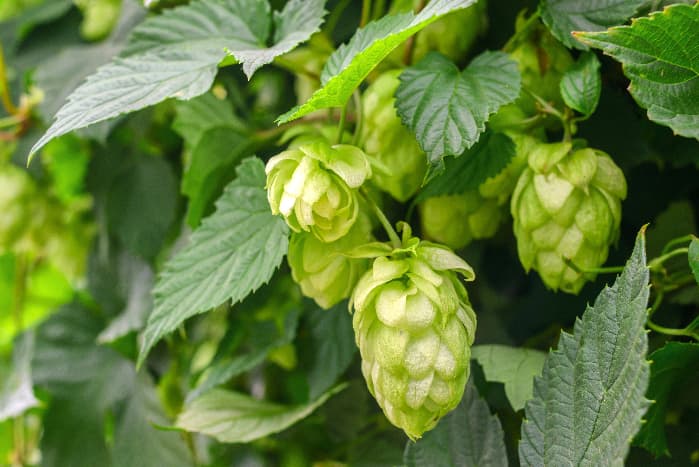
History and Origin of Chinook Hops
Chinook was born and bred in Washington state by Chuck Zimmerman of the USDA hop breeding program and released in 1985. Chinook has been around the block a time or two, but it’s always been at the forefront of craft beer in America. Chinook is a cross between a Petham Golding and a variety only known as USDA 63102M. Chinook has stayed true to its place of origin, as it’s still primarily grown in the Pacific Northwest of the United States.
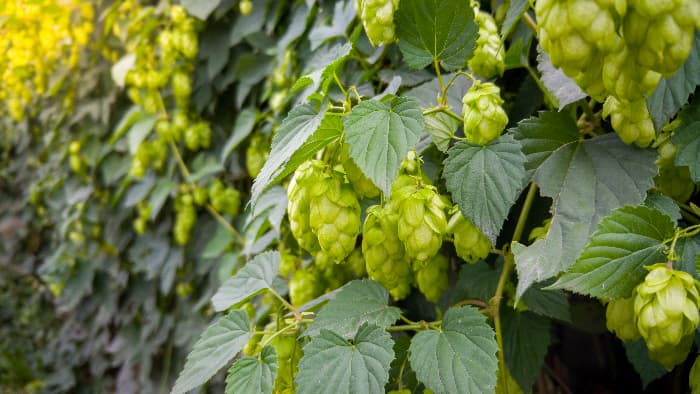
General Characteristics
Generally speaking, Chinook is used mostly as a bittering hop on a commercial level and as a flavor hop on a craft beer level. It’s a dual-purpose hop that can be used at all stages of the brewing process. Chinook is typically a low-yielding crop that’s susceptible to a number of diseases and pests. However, it’s also a fairly easy hop to harvest, which offsets some of the downsides of growing it.
Flavor & Aroma Profile
Chinook is a very unique hop in its flavor and aromatic properties. It’s a slightly spicy hop with smoky and earthy qualities and a harsh bitterness when overused. Used in the proper quantities, however, Chinook imparts a smooth bitterness along with pine and resin hints. Chinook also has strong grapefruit notes as well as subtle bits of citrus and dried herb in the background.
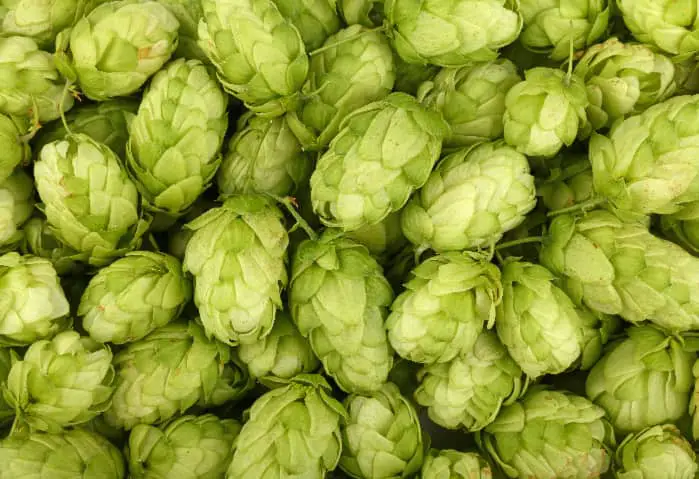
Brewing Values of Chinook Hops
Here are the brewing values for Chinook hops. Keep in mind that every year produces different quantities and qualities of Chinook, so these numbers are based on what is usually produced.
- Alpha Acid – 11.5-15%
Alpha acids are the primary source of bitterness for beer, and the longer you boil Chinook hops, the more bitter it will be.
- Beta Acid – 3-4%
Beta acid might have acid in the name, but it doesn’t contribute to a beer’s bitterness, unlike Alpha. Betas’ purpose is to contribute flavor and aroma profile to a beer.
- Alpha-Beta Ratio – 3:1 – 5:1
The ratio you use for adding Alpha and beta acids will determine how bitter your brew is.
- Co-humulone as % of Alpha – 27-35%
The lower the cohumulone % is, the less bitter your beer will be. Higher levels will result in a more bitter taste.
- Total Oils 1-2.7 mL
Oils will also add flavor and aroma to the final product. Here are the different oils used with Chinook hops.
- Myrcene – 20-30%
- Humulene – 18-24%
- Caryophyllene – 9-11%
- Farnesene – 0-1%
- All Other Oils – 34-53%
Beer Styles That Use Chinook Hops
Chinook is a versatile hop that’s used in many different beer styles including:
- American Pale Ale
- IPA
- Porter
- Stout
- American Amber Ale
- American Brown Ale
- American Barley Wine
- American Lagers
- Winter Ale
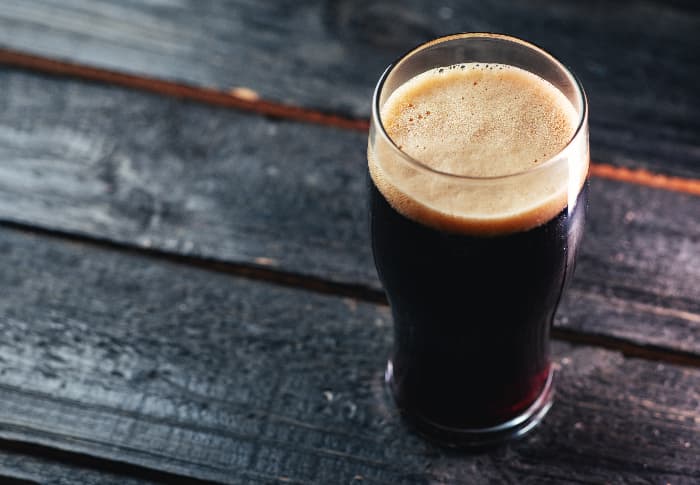
Beers That You Can Buy That Use Chinook Hops
If you want to sample Chinook first-hand, here are some of the top beers that use only Chinook hops in their creation.
- Chinook from Two Roses Brewing Company
- Boring Brown Ale from Weird Beard Brewing Company
- Chinook Blonde from Goose Eye Brewing Company
- Chinooker’d from Lawson’s Finest Liquids
- Arrogant Bastard from Stone Brewing Company
Common Substitutions For Chinook Hops
Because of how popular Chinook is, you shouldn’t have trouble getting your hands on it. However, here are a few acceptable substitutions for Chinook hops.
- Galena
- Nugget
- CTZ
- Northern Brewer
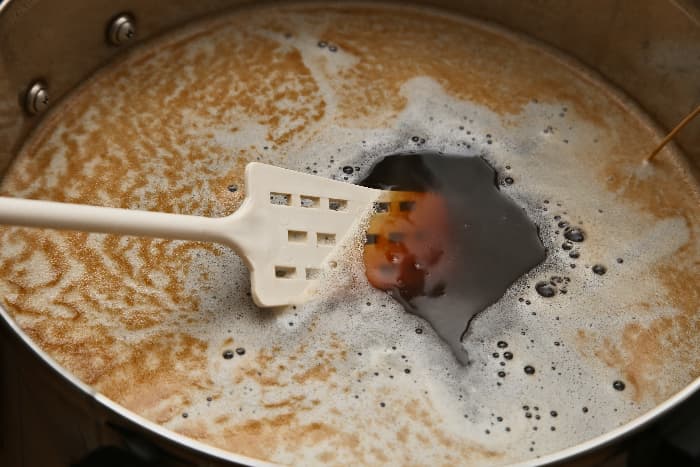
How to Grow Your Own Chinook Hops
Have we got you curious and thirsty enough to try to grow your own Chinook hops yet? If so, here is some crucial information that you’ll need.
Water
Like all hops, Chinook needs plenty of water, especially in the first two years of growth. Water Chinook regularly so that the soil remains moist but not flooded. You should be able to stick your finger two inches into the ground at all times and feel moisture.
Light
Chinook requires 6 to 8 hours of sunlight per day. Full sun is ideal unless you live in warmer climates with high temperatures. Where the temperature is consistently in the 80s and 90s, your plant will need a mixture of sun and shade.
Soil
Sandy, well-drained loam soil with a pH level between 6.0 and 7.0 is best for growing Chinook hops. You’ll want to plant your rhizome at least four inches deep in the ground and allow enough space for your plant’s roots to spread. Planting each Chinook hop plant 3 to 5 feet apart should be sufficient.
Zones
Hops plants are hardy and can thrive in hardiness zones 3 through 8. It’s best to plant Chinook hops between the months of February and April because they can withstand cold temperatures for the most part. However, you want to avoid planting them until after the last frost of the year.
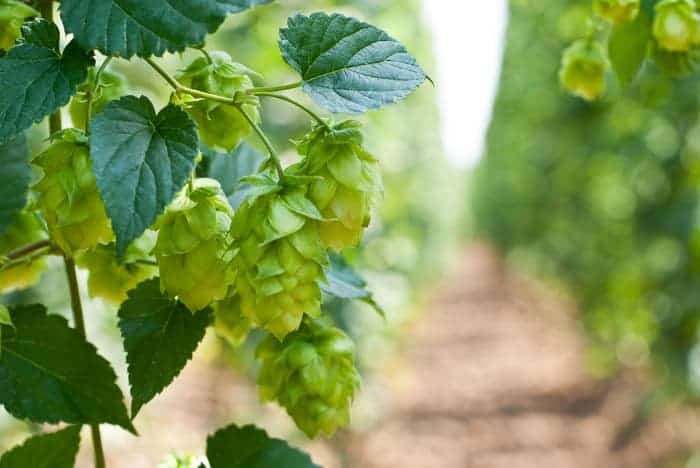
Pruning
Keep your hop plants trimmed to maintain good growth and reduce pests and diseases. Trimming is also key to keeping hop plants growing vertically instead of horizontally. If needed, use a pole or post to help train your plants to grow in a vertical direction. At times, you may need to also introduce a fungicide or herbicide into the hop growth process to keep mildew and pests at bay.
Outdoor
Chinook will grow to a height of 20-25 feet tall, so you’ll want to plant them outdoors. You should also provide a trellace or support system to aid them as they grow tall.
Where To Purchase Chinook Hops
If you’re anxious to try Chinook in one of your very own homebrews you can purchase the pellets at Amazon.
Final Thoughts About Chinook Hops
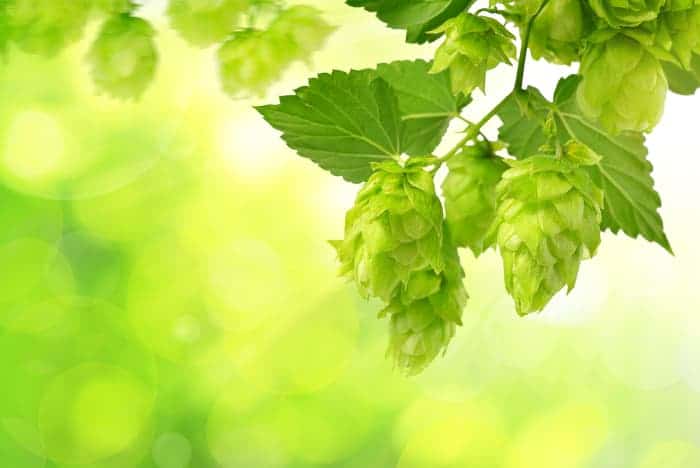
Chinook is a good representation of all that craft beer should be. It’s versatile, straightforward, and you know exactly what you’re getting when you use Chinook in a homebrew. While it may not be as exciting or groundbreaking as other hop varieties, Chinook is a staple in craft brewing and that fact isn’t going to change anytime soon.
Have you made or enjoyed craft brew made with Chinook hops? If so, tell us all about your experiences in the comments section below! To read about other hops you can try at home, click here for our hops blog posts.
- About the Author
- Latest Posts
Jalin Coblentz was born and raised in northeast Ohio in the heart of farming country and grew up working in the family garden growing corn, tomatoes, potatoes, and a wide range of vegetables.
Canning and preservation were also a way of life for Jalin growing up, and he spent countless hours helping his mother, grandmother, and aunts with these duties. It’s now his passion to share his skills and knowledge with others to help them achieve their own growing goals.

